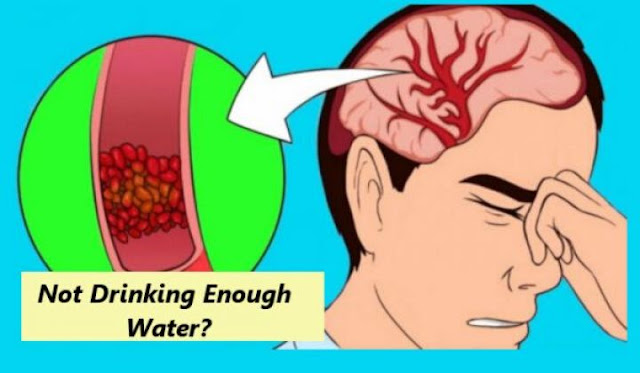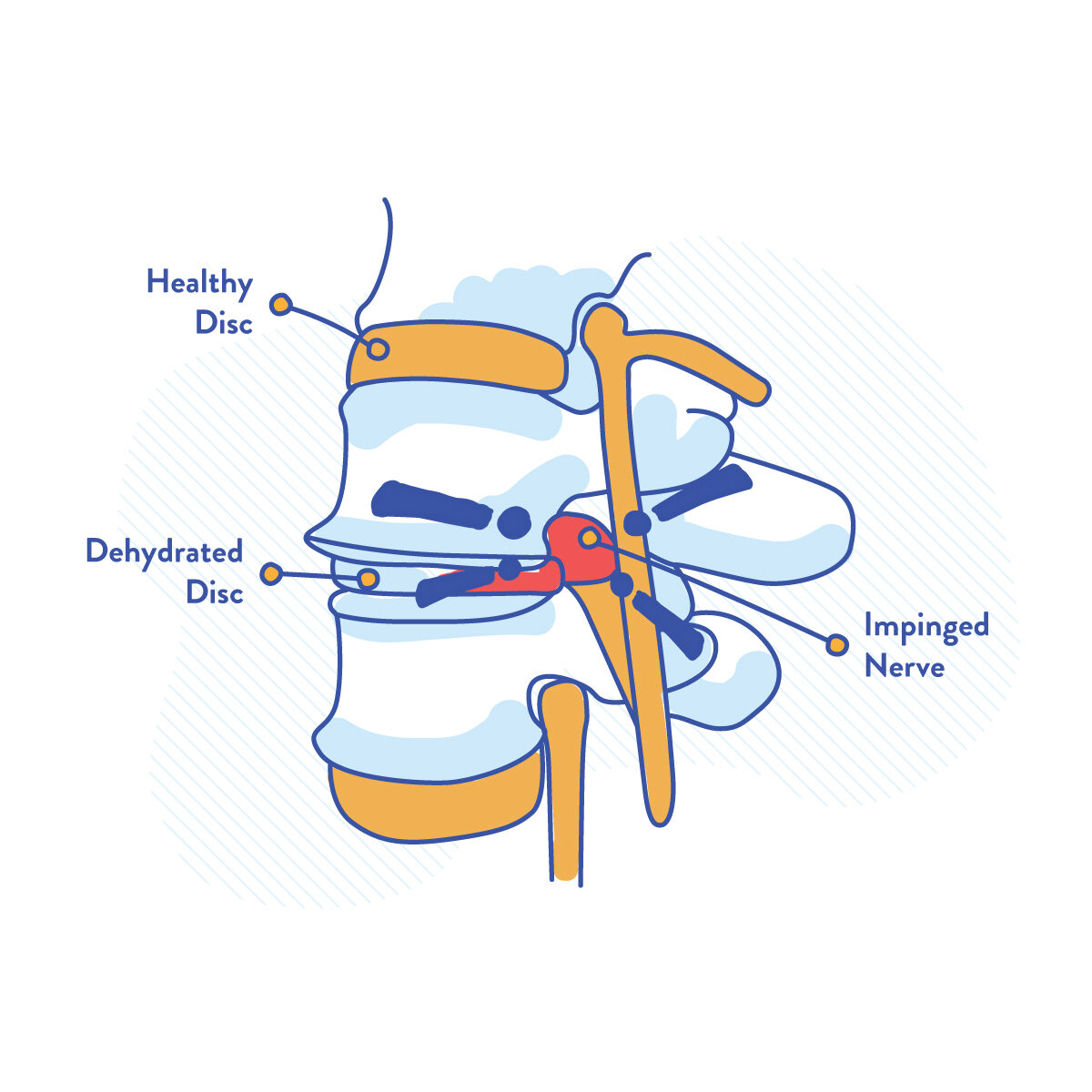As we go about our daily lives, it’s easy to forget the importance of staying hydrated. It’s no secret that drinking water is crucial for maintaining good health, but did you know that it can also play a role in preventing back pain? Back pain is a common issue that affects people of all ages, and it can be caused by a variety of factors. One factor that is often overlooked is dehydration. Not drinking enough water can lead to a host of problems, including muscle cramps, fatigue, and even back pain. In this blog post, we will explore the connection between dehydration and back pain, and show you how staying hydrated can help you prevent and manage back pain. We will also provide you with tips on how to stay hydrated throughout the day, and explain why it’s important to listen to your body’s thirst cues. So if you’re someone who suffers from back pain, or if you simply want to learn more about the benefits of staying hydrated, keep reading!

How Dehydration Causes Back Pain
When the gelatinous substance inside your discs loses water and is unable to support the weight of your body, the disc collapses and may put pressure on the delicate nerves leaving the spinal column. This is how dehydration can cause back pain.
Your spine has a disc between each pair of vertebrae, and it serves to separate interlocking bones as well as to cushion, absorb shock, and allow mobility for the spine.
Your discs are made to resemble jelly donuts in that they have a sturdy outer ring of fiber and a softer, more gelatinous substance in the center. The nucleus pulposus, a gelatinous center known scientifically, is what provides the majority of the cushioning for your spine and is made primarily of water.
The water in the discs slowly leaks out throughout the day as your spine experiences normal wear and tear. Gravity pulls water down your spine and allows your discs to continually rehydrate as you move around, so normally this isn’t a problem.
But when you don’t drink enough, your body doesn’t have enough water to rehydrate the discs, and they start to shrink.
When a disc is dehydrated, it places almost all of your weight on the outer ring of the disc, which wasn’t designed to carry such a heavy load and could actually start to collapse under the pressure. Recall that the jelly-like substance in the middle of your discs acts as a shock absorber. Even a slight disc collapse can begin to put pressure on the spinal column’s delicate nerves, which can result in pain throughout the body.

Dehydrated discs may also swell and, if enough pressure is applied, may rupture, resulting in a herniated disc.
Consider drinking more water if you experience occasional flare-ups of neck, back, or even leg pain.
How to Stay Hydrated
Water is wonderful because it is almost always available and cost-free. As a result, it’s simple to maintain hydration and treat back pain that might be brought on by a lack of water in your discs.
Here are some recommendations to help you stay hydrated and keep your discs full of water:
- Drink More Water — Over time, experts have disagreed about how much water a person should consume, and sadly, there isn’t a set amount that applies to everyone. However, if you’re generally healthy, 4-6 cups per day is a good guideline, according to Harvard Health. However, you still need to keep an eye on yourself because your actions do affect how much water you need to drink. For instance, if it’s a humid summer day outside and you notice that you’re sweating a lot, this indicates that you’re losing water more quickly and should likely drink more fluids to prevent dehydration.
- Drink a lot of water while exercising — According to experts, the average person could lose between 17 and 50 ounces of water for every hour of exercise. That’s a pretty wide range, and even though most people drink while exercising, most simply don’t drink enough to make up for the fluids they lose through sweat. People typically drink when they feel thirsty, and while this is undoubtedly a good sign that you should, it also indicates that your body is already dehydrated. The part of the brain that activates your thirst response is called the hypothalamus. It continuously scans your blood for high sodium levels and other substances that tend to be present in greater amounts when the body is becoming dehydrated. It also monitors blood pressure and fluid levels, which can change depending on your diet, exercise routine, health, and other factors. Normally, the hypothalamus will produce a thirst response when it detects that your blood pressure is rising too quickly, your sodium levels have increased, or that you are not drinking enough fluids. The problem is that because this response is brought on by already-occurring events, your body is typically already to a point of dehydration when your thirst response kicks in. There isn’t a universally accepted hydration standard for everyone on the planet, like there is for most other aspects of health. This is simply because people are different. How much you sweat depends on many factors, including body weight, exercise type and intensity, ambient temperature, physical fitness, and more. Therefore, you must understand how your body functions and determine the precise amount of liquid you should consume. But before you begin exercising, experts from the American Council on Exercise advise that you drink at three different times: Pre-ExerciseYou should drink 17 to 20 ounces of water two to three hours before you begin exercising. Then, consume an additional 8 ounces of liquid 20 to 30 minutes prior to your workout. Mid-Exercise Depending on how hard you’re working out and how much you’re sweating, you should drink 7 to 10 ounces of water every 10 to 20 minutes. Finally, you should consume 8 ounces of water within 30 minutes of your workout ending. After that, add an additional 16–24 ounces for each pound you lost. It’s also a good idea to keep in mind that if you’re planning to exercise for longer than an hour, you might want to think about bringing a sports drink with sodium and potassium. Many people frequently choose well-known sports beverages like Gatorade and Powerade. Both are tasty, but, depending on the flavor you select, each has around 21 grams of sugar. 3 Depending on your body type, this concentrated sugar may result in cramps and stomach pain, which may make it difficult to exercise. We usually advise athletes who are exercising for more than an hour to try a sports drink that is more natural and contains less sugar; one of our favorites is Skratch.
- Keep an eye on your urine because it’s one of the most reliable indicators of how hydrated your body is. The body naturally removes toxins that accumulate in the kidneys and waste products that can float around in the blood stream by producing urine. According to Harvard University, when your urine is dark yellow or amber, it indicates that you aren’t drinking enough because there is less water and more waste than usual in your system. Your urine should be a light yellow color if you’re healthy and well-hydrated. The Cleveland Clinic has created a fantastic infographic on the various hues of urine and what they can indicate. Additionally, keep in mind that you’ll probably begin to urinate more when you drink more. Some people may find the extra trips to the restroom inconvenient, but eventually your body will get used to your increased liquid intake, and you won’t need to go as frequently.
Being hydrated has many benefits beyond just improving the health of your spine, though this is undoubtedly a major advantage. Additionally, it improves your heart health, helps your kidneys get rid of toxins, feeds your muscles with nutrients, thickens your hair, softens your skin, and does a whole lot more.
Although it may seem like a daunting task, drinking 4-6 cups of water each day is not as difficult as it may seem.
An average Nalgene bottle is 32 ounces, or about four cups, which means that you only need to drink less than two to reach your daily goal. Totally feasible. Its also helpful to note that drinking other liquids throughout the day like coffee and juice actually do help push you towards your daily recommended intake amount. Of course, the difference is that youre typically taking in other chemicals, sugars, acids and more with those drinks, so they should be consumed responsibly.
Numerous additional techniques and tips for staying hydrated can be found online. Find the approach that works best for you and stick with it, and before long, it’ll become a healthy habit and relatively simple to maintain your goals.
Make an appointment with your spine care specialist if you experience persistent or severe back pain.
References
1. Fetters, K. A. (2018, July 9). How Much You Really Need to Drink When Exercising. Retrieved March 7, 2019, from https://health.usnews.com/well…
2. Perry, S. (2008, March 16). The Neural Regulation of Thirst. Retrieved March 7, 2019, from http://www.brainfacts.org/Arch…
3. Bryan, D. (n.d.). Powerade Vs. Gatorade. Retrieved March 7, 2019, from https://www.livestrong.com/art…
FAQ
Can drinking water help with back pain?
By benefiting your spine and surrounding muscles, drinking plenty of water throughout the day can help reduce your lower back pain. Water keeps the spinal discs full of fluid so they can properly cushion the spine during movement.
What are the symptoms of not drinking enough water?
- dizziness or light-headedness.
- headache.
- tiredness.
- dry mouth, lips and eyes.
- urinating infrequently in small amounts (less than three or four times per day)
What part of your body hurts when you are dehydrated?
Our muscles need a lot of water and electrolytes to perform the tasks we ask of them. Our muscles can become incredibly sensitive and spasm or contract uncontrollably if we don’t drink enough fluids.
Can dehydration cause muscle and back pain?
Dehydration, which can also cause the back muscles to spasm like the thigh and calf muscles, can have a significant impact on back pain. It’s crucial to keep in mind that the spinal column’s joints and discs need enough fluid to function properly.
Ask The Doc – Can Dehydration Cause Back Pain?
Reference:
https://www.brainspinesurgery.com/dehydration-causing-back-pain/
https://www.shieldschiropractic.net/blog/is-dehydration-the-cause-of-your-back-pain